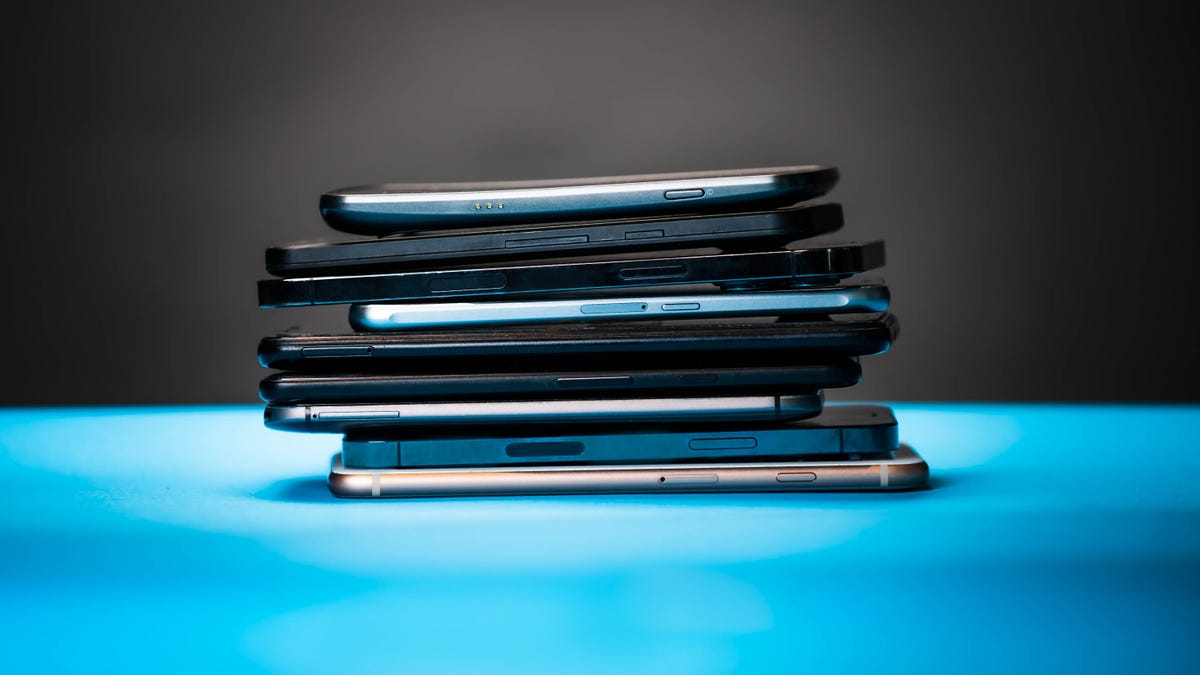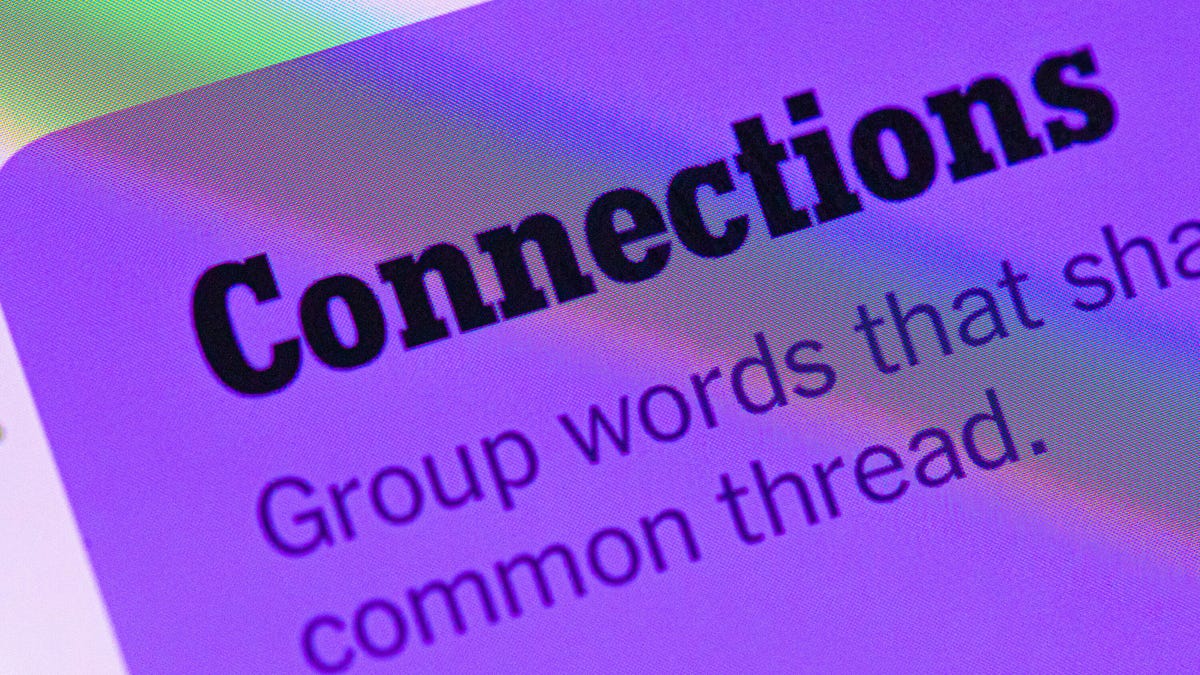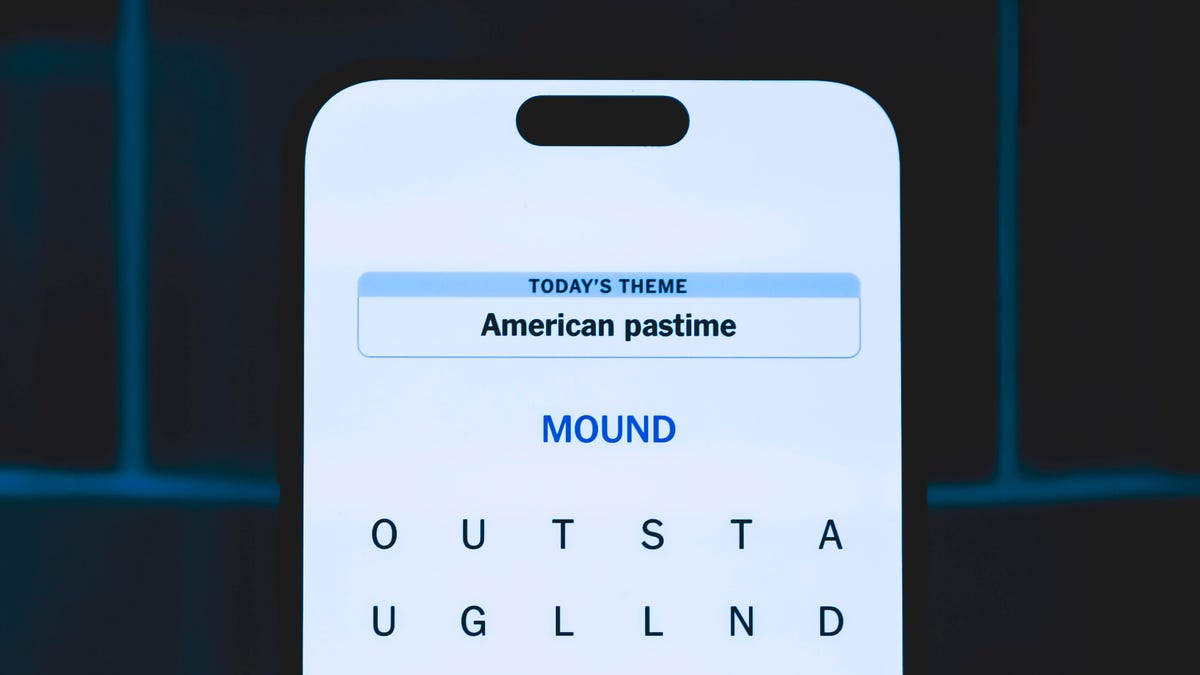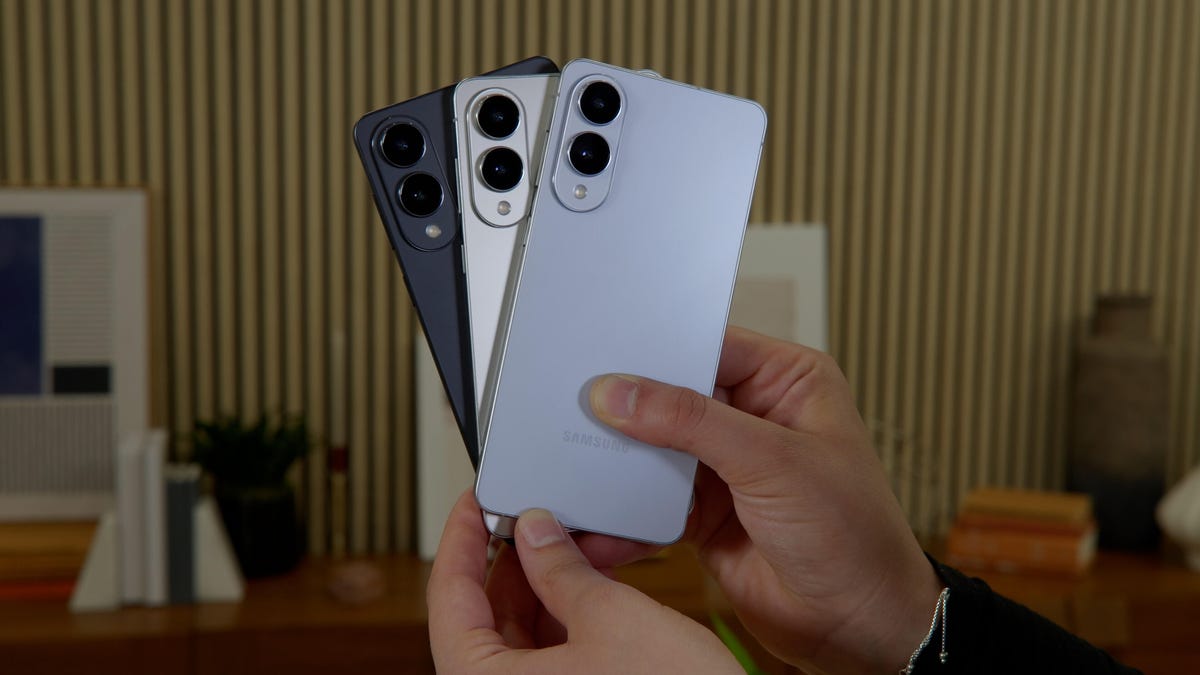Technologies
How CNET tests phones
What goes into a CNET smartphone review

Phones are much more than communication devices; they’re our gateway to the internet. They’ve become the center of our daily lives, housing our personal information, work essentials, personal memories and enabling us to reflect our personalities online. That’s why CNET conducts rigorous tests to help you find the right phone for your budget and needs.
When reviewing phones, we take a variety of factors into account such as camera quality, battery life, design, software and longevity. Every phone is different, but our testing allows us to answer the same question in each review: Is this phone worth buying? We evaluate phones based on the quality of their hardware and software, whether they introduce any meaningful new innovations and whether they’re the right price.
We replace our personal phone with the test unit during the review period so that we can get an accurate impression of what it’s like to rely on the device for daily tasks. In addition to this anecdotal usage, we also conduct specific side-by-side tests against other phones as part of the evaluation process.
We generally test phones against their immediate predecessor, competing phones from other companies or another phone within the same product line (for instance, iPhone 14 versus iPhone 14 Pro). We focus on whichever comparisons are most useful for helping our readers navigate the buying decision, and that may vary depending on the phone. Whenever possible, we work all three types of comparisons into a review.
Some of these methodologies are relatively new to CNET’s testing procedures, so you may not see them in all of our reviews from 2022. We’re in the process of updating our current reviews with these tests and plan to implement them fully in 2023.
Below is a general overview of what goes into a CNET smartphone review.
Testing smartphone cameras
The camera is the biggest area where companies like Apple, Samsung, Google and OnePlus typically make improvements to new models each year, and our reviews put phone maker’s claims to the test. We take photos in a variety of circumstances and lighting conditions, including bright outdoor areas, dim indoor settings and mixed lighting.
We capture a variety of subjects (objects, pets and people) to assess boldness, sharpness, skintones and color accuracy. We test all of the phone’s main lenses (wide, telephoto and ultrawide), front-facing cameras as well as different shooting styles, like portrait mode and night mode. Our reviews also cover useful editing features or shooting modes that are specific to the device, such as the Google Pixel 7’s Face Unblur or the iPhone’s Cinematic Mode.
Part of these tests include side-by-side photo comparisons between the phone we’re reviewing and previous phones we’ve tested. We evaluate a phone’s cameras on their consistency as well as how they stack up against the competition. All photos are straight out of camera and accessed without any edits, unless specifically noted. Beyond the initial impressions we get from viewing these photos on a phone’s screen, we also upload them to a computer and view them alongside one another on a monitor. This reduces any bias that may come from the different screens on each phone. It also makes it easier to view discrepancies in clarity and color between each photo.
We also capture video with the review phone and judge it on its image and audio quality. Just because a phone can capture 6K or 8K video doesn’t mean it’s good. Unlike the computational photography algorithms that Google, Apple, Samsung and others apply to photos, videos remain relatively less processed, making it easier to critique a camera’s strengths and flaws.
Testing smartphone performance
The performance section of our reviews examines how responsive phones are in everyday use, how well they juggle multiple tasks and how they fare during benchmark tests.
We do this by observing how quickly phones can open apps and launch the camera. We also note whether the phone has an adaptive refresh rate setting and how this improves performance if at all (for example, whether this makes animations and scrolling feel smoother). We also look for signs of lag when running multiple apps (such as using a social media app or playing a game while on a video call), or playing an online multiplayer game with the highest graphics settings.
In addition to these everyday tasks, we also run a series of benchmarks designed to test a phone’s computing power and graphics performance. These tests include Geekbench 5 for general CPU performance and 3DMark Wild Life Extreme for graphics. We also run the same tests on other phones that we’re comparing our test device to.
Testing smartphone battery life
We test battery life in three ways: through an anecdotal stress test, a video streaming test and by observing battery life after everyday use. As noted earlier, these tests are relatively new and we’re still in the process of adding them to our 2022 reviews.
The anecdotal stress test measures how much the battery drains after 45 minutes of general usage. We do a little bit of everything during this test to mimic authentic everyday experiences. That includes streaming video, using social media apps, playing a game, making a video call and other miscellaneous tasks like checking email. After this 45 minutes of mixed usage, we mark down the percentage of battery drain. To keep the test consistent between phones, we perform each of those tasks for roughly 10 minutes. We also keep the screen brightness set to 50%, turn off the always-on display and keep the high refresh rate setting on (if there is one).
The streaming test monitors how much the battery drains over a three-hour period while viewing a video on YouTube. We use the same video each time for consistency and set the screen brightness to 100%. We also disable settings that automatically dim or brighten the screen, connect to Wi-Fi and turn on the adaptive or high refresh rate setting if applicable. We take battery percentages at the one-hour, two-hour and three-hour marks.
Since we use test phones as our regular devices, we also discuss how long the battery has lasted in everyday use based on our experience. Often, our practical experience with a phone’s battery life can give us the most accurate prediction of what others might expect if they bought the same phone.
Testing smartphone design, software and display
Our smartphone reviews also encompass other areas like design, software and display quality. Design can be subjective, but we generally look for factors such as durability (water and dust resistance ratings), how easy the phone is to operate with one hand, the build quality and whether the design is unique or interesting in any way. For display quality, we’ll mention factors like brightness, how easy it is to see in sunlight and sharpness and color.
Software is another key part of CNET’s smartphone reviews. We mention any new or noteworthy features and how long the phone will support new versions of Android (or iOS respectively) and security updates.
Our written review tells you everything we feel and experienced, but we also give each phone overall score and star rating to provide a different context. A $450 phone might lack all the features that a $1,000 phone has, but its value might mean it gets a higher score. We also update these ratings based on a variety of factors, including software changes and quality control issues.
Reviews will always vary depending on the device, but these are the core tenets that make up a CNET smartphone evaluation. Determining a phone’s overall value is our guiding principle in every smartphone review. Our reviews shed light on whether a new phone lives up to its expectations, who the phone is for and whether it delivers on its promises for the price. We are always evaluating our own testing methodologies and looking for ways to improve, so expect to see more updates in the future.
Technologies
Today’s NYT Connections Hints, Answers and Help for Nov. 2, #875
Here are some hints and the answers for the NYT Connections puzzle No. 875 for Sunday, Nov. 2.

Looking for the most recent Connections answers? Click here for today’s Connections hints, as well as our daily answers and hints for The New York Times Mini Crossword, Wordle, Connections: Sports Edition and Strands puzzles.
Today’s NYT Connections puzzle has a neat purple category today. It’s fun, but it’s not easy to solve, so if you need help, you’re in the right place. Read on for clues and today’s Connections answers.
The Times now has a Connections Bot, like the one for Wordle. Go there after you play to receive a numeric score and to have the program analyze your answers. Players who are registered with the Times Games section can now nerd out by following their progress, including the number of puzzles completed, win rate, number of times they nabbed a perfect score and their win streak.
Read more: Hints, Tips and Strategies to Help You Win at NYT Connections Every Time
Hints for today’s Connections groups
Here are four hints for the groupings in today’s Connections puzzle, ranked from the easiest yellow group to the tough (and sometimes bizarre) purple group.
Yellow group hint: Move the stuff.
Green group hint: Check your crayon box.
Blue group hint: Whew, I’m wiped out.
Purple group hint: Check your horoscope.
Answers for today’s Connections groups
Yellow group: Goods to be transported.
Green group: Light brown shades.
Blue group: Show signs of physical exertion.
Purple group: Starts of zodiac signs.
Read more: Wordle Cheat Sheet: Here Are the Most Popular Letters Used in English Words
What are today’s Connections answers?
The yellow words in today’s Connections
The theme is goods to be transported. The four answers are cargo, freight, haul and load.
The green words in today’s Connections
The theme is light brown shades. The four answers are camel, fawn, khaki and tan.
The blue words in today’s Connections
The theme is show signs of physical exertion. The four answers are cramp, pant, redden and sweat.
The purple words in today’s Connections
The theme is starts of zodiac signs. The four answers are aqua, capri, gem and sag. (Aquarius, Capricorn, Gemini and Sagittarius.)
Technologies
Today’s NYT Strands Hints, Answers and Help for Nov. 2 #609
Here are hints and answers for the NYT Strands puzzle No. 609 for Sunday, Nov. 2.

Looking for the most recent Strands answer? Click here for our daily Strands hints, as well as our daily answers and hints for The New York Times Mini Crossword, Wordle, Connections and Connections: Sports Edition puzzles.
Today’s NYT Strands puzzle is a real puzzler. You runners might have a better shot at solving it than the rest of us. Some of the answers are a bit tough to unscramble, so if you need hints and answers, read on.
I go into depth about the rules for Strands in this story.
If you’re looking for today’s Wordle, Connections and Mini Crossword answers, you can visit CNET’s NYT puzzle hints page.
Read more: NYT Connections Turns 1: These Are the 5 Toughest Puzzles So Far
Hint for today’s Strands puzzle
Today’s Strands theme is: Go the distance.
If that doesn’t help you, here’s a clue: 26.2 miles.
Clue words to unlock in-game hints
Your goal is to find hidden words that fit the puzzle’s theme. If you’re stuck, find any words you can. Every time you find three words of four letters or more, Strands will reveal one of the theme words. These are the words I used to get those hints, but any words of four or more letters that you find will work:
- RUNT, TURN, TURNER, STAT, STAR, HATS, RATS, CAPE, MOTE, STRAT, TART, TARTS, ROAN, DRAT, DRAM, HOME, TOME, TIME, TIMER, PERK
Answers for today’s Strands puzzle
These are the answers that tie into the theme. The goal of the puzzle is to find them all, including the spangram, a theme word that reaches from one side of the puzzle to the other. When you have all of them (I originally thought there were always eight, but learned that the number can vary), every letter on the board will be used. Here are the nonspangram answers:
- PACE, START, FINISH, RUNNER, HYDRATION, TIMEKEEPER
Today’s Strands spangram
Today’s Strands spangram is MARATHON. To find it, start with the M that’s three letters to the right on the bottom row, and wind up.
Technologies
Galaxy S26 Rumor Roundup: Samsung Could Be Shaking Up Its Flagship
Rumors about Samsung’s next Galaxy S26 series have been all over the place.

The year isn’t over yet, and there are already plenty of wild rumors about the upcoming Galaxy S26 line of phones.
Months ago, there was speculation that Samsung would replace its base phone with the Pro. It was rumored that the Plus would be discontinued in favor of the S26 Edge (much like how Apple dropped its Plus phone for the thin iPhone Air), and the Ultra would remain without any name change.
But just a few weeks ago, new reports emerged. Word is that the S26 Pro will simply be the S26, and the S26 Edge might be on its way out.
Here’s a quick rundown of the latest Galaxy S26 talk to make sense of it all.
Galaxy S26 line release date
Samsung typically hosts a few Unpacked events each year, with the first event usually taking place in either January or February. Most of this year’s S25 handsets were announced at a Galaxy Unpacked event on Jan. 22, 2025, and released on Feb. 7, so we can expect a similar timeline for the Galaxy S26 series.
However, it’s possible that additional S26 releases may occur throughout the year. In 2025, for example, Samsung released two more S25 handsets — the S25 Edge and the S25 FE — at two separate events in May and September, respectively.
Galaxy S26 Pro
For months, one of the biggest rumors surrounding the Galaxy S26 was that it might not exist at all. Internal build code uncovered by Android Authority suggested Samsung could be scrapping the base model entirely and replacing it with the S26 Pro. That might sound strange at first, but it could have signaled Samsung’s plan to position the S26 lineup as a more premium offering than its predecessors.
According to a new report from SamMobile, the Galaxy S26 Pro might actually just be the standard Galaxy S26. Given that most other rumors suggest the phone will be pretty entry-level, that could very well be the case.
Leaked renders of the S26 (whether the base or Pro model) show a design very similar to the S25, with one key difference: the rear camera. The S26 appears to have a vertical bump on the back housing three camera lenses, while the S25 has no bump at all, with its lenses fitted directly into the body.
According to Android Headlines, the S26 will feature a 50-megapixel ultrawide camera, representing a significant upgrade from the S25’s 12-megapixel ultrawide camera. There have been conflicting rumors about this, though. Others have speculated that the S26’s camera specs will remain unchanged from the S25.
Other speculations about the S26 include a slightly bigger 6.3-inch screen, along with an overall slightly larger and slimmer build. Android Headlines also reports that the S26 Pro could have a 4,300-mAh battery, up to 12 GB of RAM and as much as 512 GB of storage.
As for the processor, Samsung’s VP of its Mobile Experiences Division, Daniel Araujo, said in a recent earnings call that the S26 lineup will «revolutionize the user experience with user-centric, next-gen AI, a second-generation custom AP, and stronger performance, including new camera sensors.»
This is a strong indicator that the Galaxy S26 series will be powered by the Exynos 2600 processor at least in some regions, according to Android Headlines.
That said, rumors suggest that the S26 will use Qualcomm’s latest Snapdragon 8 Elite Gen 5 chipset in the US and China. According to Qualcomm, the new Snapdragon chip is about 20 percent faster and 35 percent more power-efficient than its predecessor.
Galaxy S26 Edge and Plus
The Galaxy S25 Edge debuted with a lot of fanfare this year, thanks to its ultra-slim form factor, so it’s not a stretch to imagine Samsung will come out with a successor next year. However, there have been conflicting rumors about whether this will happen at all.
For months, there were leaks suggesting Samsung would replace the Galaxy S26 Plus with the Galaxy S26 Edge. The S26 Edge was expected to have a super slim profile of around 5.5 mm, making it 0.3 mm skinnier than the S25 Edge. That’s also 0.1 mm thinner than the iPhone Air. There was further speculation that it would have the same 6.7-inch screen, a larger 4,200-mAh battery and the newer Snapdragon processor.
Now, however, this rumor looks to be on shaky ground. According to SamMobile and 9to5Google, the company could be dropping the Galaxy S26 Edge from its 2026 lineup due to poor sales of the Galaxy S25 Edge, especially in comparison to the rest of the Galaxy S25 series. Instead, Samsung could be replacing the S26 Edge with the Galaxy S26 Plus. We currently don’t know too much about the S26 Plus, but it’ll likely have the same 6.7-inch screen as its predecessor.
Galaxy S26 Ultra
With all the uncertainty surrounding the Galaxy S26 (or Pro) and the Galaxy S26 Edge (or Plus), the only handset seemingly free of confusion is the Galaxy S26 Ultra. According to renders uncovered by Android Headlines, the S26 Ultra looks to have a slightly different design than its predecessor.
The images appear to show that the Galaxy S26 Ultra has curvier corners compared to its predecessor and a slightly different camera layout on the rear. The four cameras are positioned in the same locations, but three of them are housed in a raised vertical bump. There’s also speculation that the Ultra could be slightly slimmer, at 7.9 mm thick, which is 0.3 mm thinner than the current S25 Ultra. Android Headlines also says that the phone’s 6.9-inch display could use new M14 OLED panels, which would be brighter and more power efficient.
Unfortunately, current rumors suggest that the S26 Ultra will feature very similar camera specs. ETNews claims it will still have a 200-megapixel main camera, a 50-megapixel ultrawide, a 10-megapixel 3x telephoto and a 50-megapixel 5x telephoto. The front-facing 12-megapixel camera also appears unchanged.
Like with the Galaxy S26, the Galaxy S26 Ultra is said to ship with the aforementioned Snapdragon 8 Elite Gen 5 in the US and China, and with the Exynos 2600 chip in other markets. Other rumored specs include 16 GB of RAM, up to 1 TB of UFS 4.0 storage, a 5,000-mAh battery and faster 60-watt wired charging.
-

 Technologies3 года ago
Technologies3 года agoTech Companies Need to Be Held Accountable for Security, Experts Say
-

 Technologies3 года ago
Technologies3 года agoBest Handheld Game Console in 2023
-

 Technologies3 года ago
Technologies3 года agoTighten Up Your VR Game With the Best Head Straps for Quest 2
-

 Technologies4 года ago
Technologies4 года agoVerum, Wickr and Threema: next generation secured messengers
-

 Technologies4 года ago
Technologies4 года agoBlack Friday 2021: The best deals on TVs, headphones, kitchenware, and more
-

 Technologies4 года ago
Technologies4 года agoGoogle to require vaccinations as Silicon Valley rethinks return-to-office policies
-

 Technologies4 года ago
Technologies4 года agoOlivia Harlan Dekker for Verum Messenger
-

 Technologies4 года ago
Technologies4 года agoiPhone 13 event: How to watch Apple’s big announcement tomorrow
